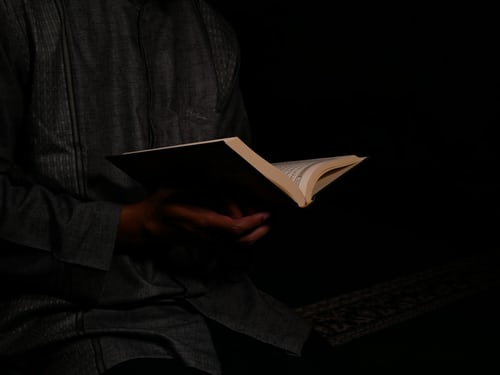Inspiring Older Readers
 posted on 11 Oct 2018
posted on 11 Oct 2018
Treasure Palaces: Great writers visit great museums edited by Maggie Fergusson
A book of essays in which writers choose a favourite museum and explain why it means so much to them. That essentially is the premise of Treasure Palaces (Profile Books 2016). And it doesn’t sound especially promising, does it? That the essays were originally commissioned for publication in Intelligent Life, The Economist’s lifestyle magazine seems to pile unlikelihood on unlikelihood.
Of course, if you don’t like museums, then this may not appeal to you. But I’m tempted to say that even if you don’t like museums you’ll find something in most of these essays to intrigue you, because their real triumph is that they are as much about the writers and the reasons behind their choices as they are the museums themselves. And it’s the incidental details that count – the telling aside, the sudden revelation, the intimacy of disclosure. Perhaps there is something about museums that makes writing about them conducive to this?
Roddy Doyle writes about the Lower East Side Tenement Museum, New York, its walls a palimpsest of the anonymous working class immigrant families that made their lives in that tenement building.
Don Paterson writes wonderfully about the Frick Collection, New York. He stands rapt before Bellini’s St Francis in the Desert, but suddenly reveals that he owes this particular pilgrimage to a dear, dead friend, the poet Michael Donaghy, ‘a poor Irish boy from the Bronx’, who was a modern formalist rather like Thom Gunn. This Bellini was one of his favourite paintings. To my shame I had never heard of Donaghy, but he wrote a magnificent poem called Machines (which you can read in full here on the Poetry by Heart website), in which a twelve-speed racing bike is compared to a keyboard pavane by Purcell. Of course, the poem isn’t really about machines, whether bikes or harpsichords, it is about grace and agility and love, and contains the line, ‘The machinery of grace is always simple’, which put me in mind of the Leica rangefinder camera – the simplest and most elegant of cameras which did so much in the hands of photojournalists and artists such as Henri Cartier-Bresson to help establish a visual grammar that dominated serious photography for the best part of fifty years.
Julian Barnes writes movingly about Ainola, once the country retreat of Sibelius and his wife, in Järvenpää, Finland, now a museum dedicated to the composer’s life. Barnes meditates on the obdurate decades-long silence when Sibelius wrote no music, and the shimmering black-and-white photographs on the sleeves of the Ace of Clubs LPs on which he first heard Sibelius’s music. But what Barnes remembers most vividly about Ainola is the Heath Robinsonesque apple peeler mounted on the worktop in the kitchen. And strangely, on the day after I read that essay I saw such a machine being demonstrated on The Antiques Roadshow.
In ‘The Odessaphiles’ (about the Odessa State Literary Museum) AD Miller considers the human cost that Odessa – ‘a theatre of both art and suffering’ – represents, and concludes, ‘I love the city, the museum and Russian literature…but in the end…[t]hey aren’t worth all the blood that has gone into them.’
In ‘Glasgow’s Palace of Dreams’, about Glasgow’s Kelvingrove Gallery, Andrew O’Hagan awoke me – as he as a teenager had been awoken – to the Scottish Colourists: Francis Campbell Boileau (FCB) Cadell, Leslie Hunter, John Duncan Ferguson and Samuel Peploe, the four Scottish painters who went to France and saw the Post-Impressionists and the Fauves and returned home to dour Edinburgh and changed Scottish painting for ever. Again, shamefully, I had heard of none of them. FCB Caddell’s work is ravishing – a Matisse run riot in the sumptuous deco interiors of Edinburgh’s wealthiest families…
And I’ve barely scratched the surface. I haven’t said anything, for instance, about what William Boyd thinks of the collection of Egon Schiele’s work (the Leopold Collection, Vienna). Yes, I know Schiele’s writhing, neurasthenic, expressionist nudes, and even some of the lesser known landscapes which somehow manage to show exactly the same disturbing characteristics as his human figures, but somehow I didn’t know that he had died a hundred years ago, aged just twenty-eight, in the great influenza pandemic of 1918, which killed more people than the First World War and the Russian Revolution combined.
Nor have I said anything about Tim Winton’s staggeringly good essay about his first visit as a child to the National Gallery of Victoria, Melbourne. From Perth where Winton was born and brought up, Melbourne’s astonishing modernity was a full week’s drive away.
And I haven’t touched on John Lanchester at the Prado, or Michael Morpugo at Ypres, or Ann Pratchett at the Harvard Museum of Natural History.
But you get the general idea. From a not very promising sounding idea a collection of essays of such great wealth and suggestiveness has been created that they will keep you fuelled with ideas and associations and inspiration for days. Hugely enjoyable and highly recommended.
Alun Severn
October 2018